What traits of collaboration networks are associated with project success? The case of two CGIAR agricultural research programs for development

Authors:
CONTEXT
Understanding research collaboration in diverse scientific communities is key to building global agricultural research systems that support the UN Sustainable Development Goals. Characterizing collaboration patterns can inform decisions to enhance the structure and dynamics of research programs.
OBJECTIVE
We introduce a new analytic framework for evaluating collaborative research networks based on scientific publications, and an associated conceptual framework for the role of research networks in achieving societal goals. We analyzed two CGIAR Research Programs: Grain Legumes and Dryland Cereals (GLDC) and Roots, Tubers and Bananas (RTB). The analysis provides a multi-dimensional perspective on a set of key questions related to research team composition, research management structures, and performance of scientific publications.
METHODS
We quantified network structures of research collaborations at the level of authors, institutions, countries, and management structures, including use of temporal exponential random graph models. We used regression models to understand the associations between the characteristics of authors and publications, and the corresponding citation rates and Altmetric Attention Scores.
RESULTS AND CONCLUSIONS
We identified key network hubs in the collaboration networks of both CGIAR programs. The proportion of women as authors in publications was less than a third, with a low likelihood of co-authorship between women. Institutional hubs were identified by institutional categories; these were often institutions that are considered CGIAR program “participants”, and a few were “planning partners”. For both GLDC and RTB, the countries that were the focus of most research coincided with the program's priority countries. Most international collaborations occurred between institutions headquartered in Global South countries, but most intercontinental collaborations occurred between Global South and Global North countries. Most institution and author co-authorships occurred in only one year and rarely lasted two or three consecutive years. High diversity in the geographic affiliations of authors, along with highly collaborative teams, as opposed to simply the number of authors, consistently were associated with more citations and higher Altmetric Attention Scores.
SIGNIFICANCE
These analyses reveal key structures in research collaboration networks in GLDC and RTB research programs, with potential to guide agricultural research systems for sustainable development. Considering these outcomes from past research management can help scientists, program managers, and funders increase the success of new research projects. Specifically, future research management strategies need to fortify existing scientific capacity and development through gender parity and balanced international collaborations, working toward more impactful publications and increased development relevance, while team size increases over time.
